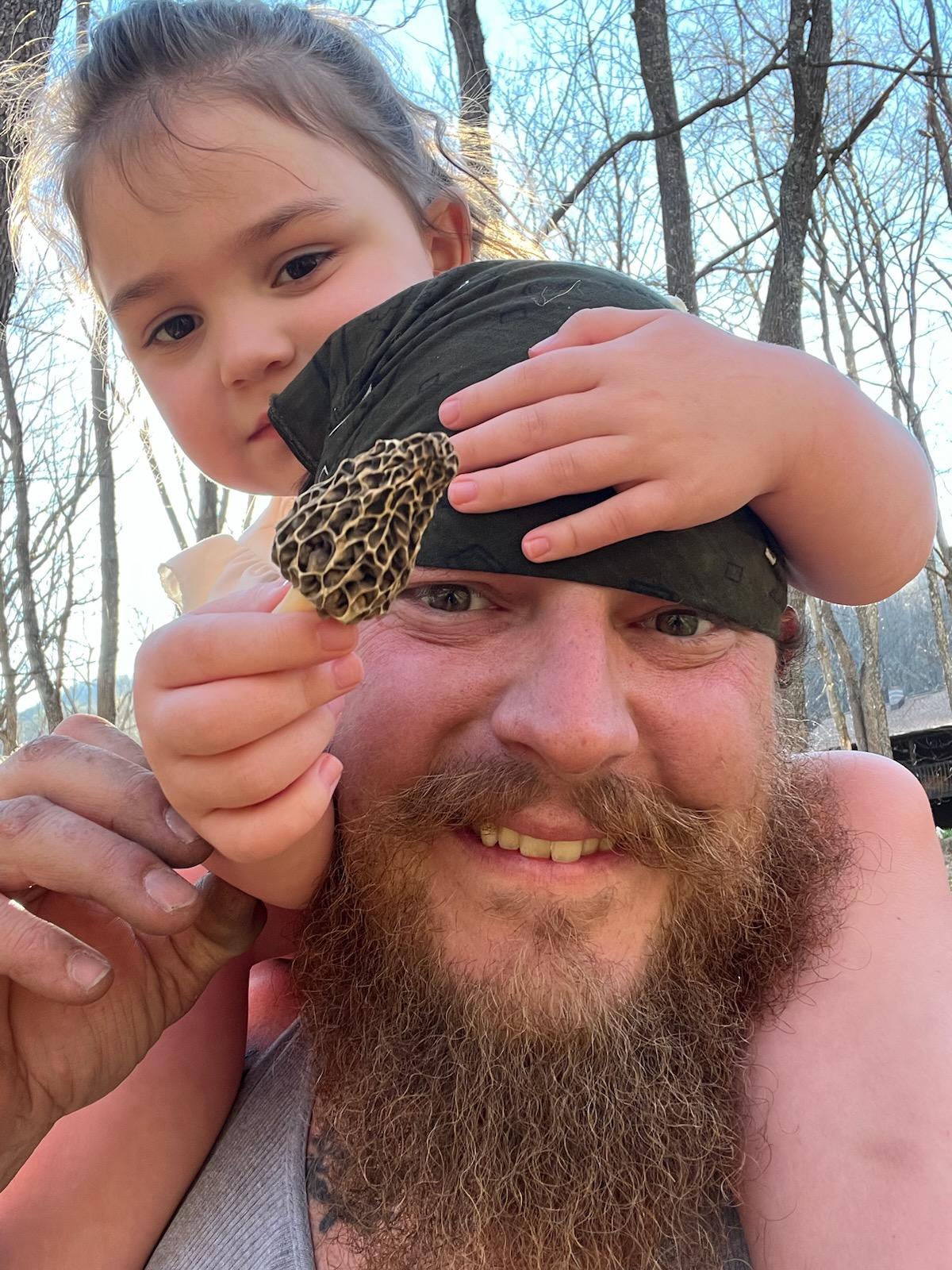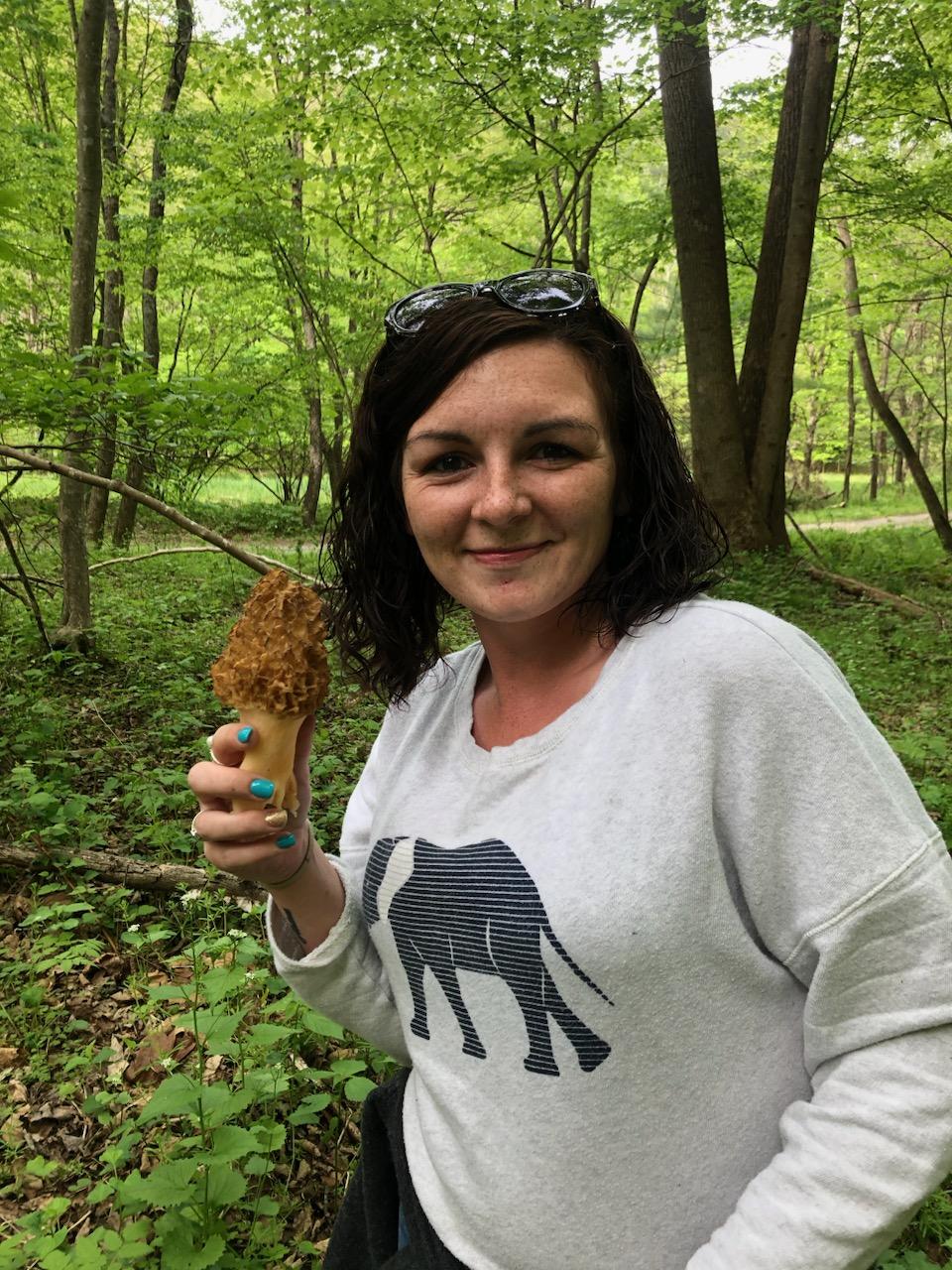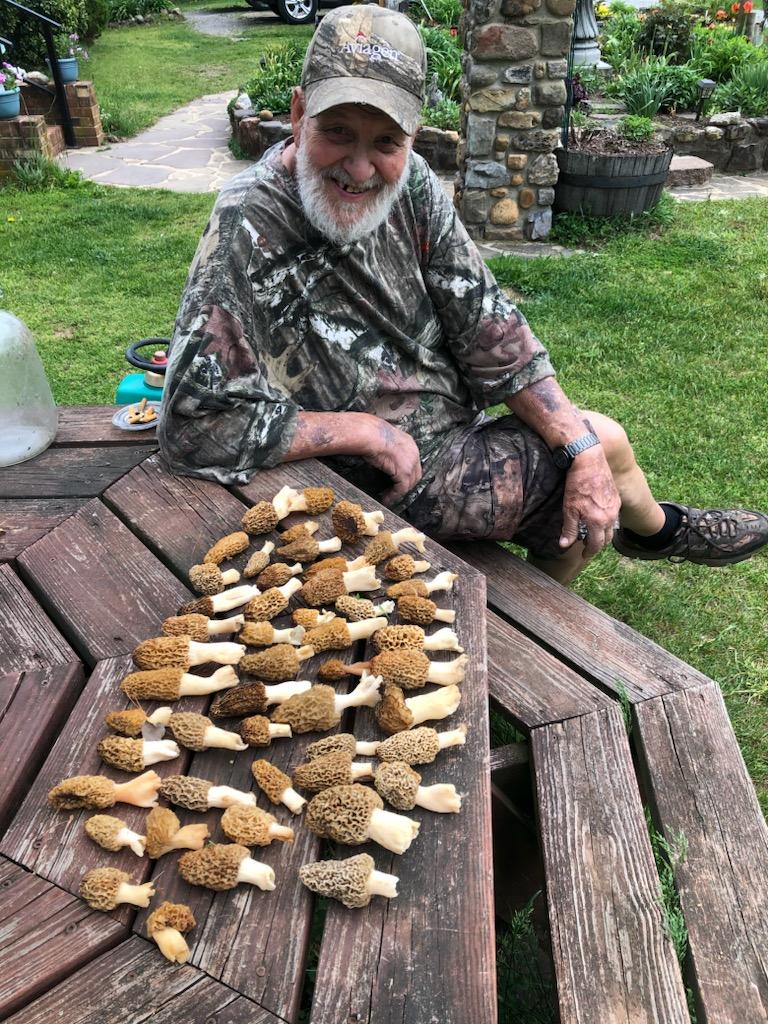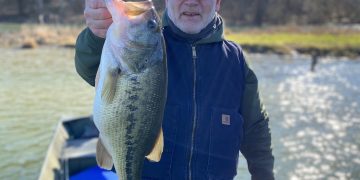 Hunting for morels in the Shenandoah Valley can be a thrilling and rewarding experience for those who love the outdoors and enjoy foraging for wild mushrooms. Michael Carr of Bergton is one of those foragers and knows his way around the lush forests and rolling hills where he finds hundreds of morels each season.
Michael learned about morels and how to hunt them from his grandfather Dewitt Carr, and now carries on a family tradition that goes back generations. He and his wife Ashly and their 3-year-old daughter hunt the elusive morels each year to enjoy and share with friends or aging relatives who perhaps don’t have the ability to find them anymore.
Morels are highly prized by mushroom enthusiasts for their unique flavor and meaty texture. They are found in the wild and are often difficult to spot due to their camouflage-like appearance. However, once you learn to identify them, hunting for morels can become a fun and exciting hobby.
Before heading out on a morel hunting expedition, it is important to do some research and preparation. Make sure you have a good understanding of the types of morels that grow in the area and when the best time is to hunt for them. Morels typically start to emerge in the spring, usually around April or May, and can continue to grow into June or so. According to Michaels grandparents you should start looking when the leaves on a poplar tree are about the size of a squirrel’s ear.
It is also important to know where to look for morels. They typically grow in wooded areas, often near decaying trees or in areas with rich soil. In order of priority, you should check around apple trees or orchards, dying poplar trees and in the late season along the riverbanks under sycamore saplings. Look for areas with a lot of moisture, as morels thrive in damp environments. Make sure you have permission to hunt the places you go, but if you don’t have access to private property there’s lots of places on national forest and public lands that can be very productive!
Hunting for morels in the Shenandoah Valley can be a thrilling and rewarding experience for those who love the outdoors and enjoy foraging for wild mushrooms. Michael Carr of Bergton is one of those foragers and knows his way around the lush forests and rolling hills where he finds hundreds of morels each season.
Michael learned about morels and how to hunt them from his grandfather Dewitt Carr, and now carries on a family tradition that goes back generations. He and his wife Ashly and their 3-year-old daughter hunt the elusive morels each year to enjoy and share with friends or aging relatives who perhaps don’t have the ability to find them anymore.
Morels are highly prized by mushroom enthusiasts for their unique flavor and meaty texture. They are found in the wild and are often difficult to spot due to their camouflage-like appearance. However, once you learn to identify them, hunting for morels can become a fun and exciting hobby.
Before heading out on a morel hunting expedition, it is important to do some research and preparation. Make sure you have a good understanding of the types of morels that grow in the area and when the best time is to hunt for them. Morels typically start to emerge in the spring, usually around April or May, and can continue to grow into June or so. According to Michaels grandparents you should start looking when the leaves on a poplar tree are about the size of a squirrel’s ear.
It is also important to know where to look for morels. They typically grow in wooded areas, often near decaying trees or in areas with rich soil. In order of priority, you should check around apple trees or orchards, dying poplar trees and in the late season along the riverbanks under sycamore saplings. Look for areas with a lot of moisture, as morels thrive in damp environments. Make sure you have permission to hunt the places you go, but if you don’t have access to private property there’s lots of places on national forest and public lands that can be very productive!
 Michael and Ashly use the “divide and conquer strategy” by splitting up and searching a little way apart to cover ground more efficiently. When searching for morels, it is important to move slowly and pay close attention to the ground. Morels can blend in with their surroundings, so it is essential to keep an eye out for their distinctive shape and color. Morels have a cone-shaped cap with a honeycomb-like pattern, and they range in color from pale yellow to dark brown.
Once you have found a morel, it is important to harvest it properly. Use a sharp knife to cut the stem near the base of the mushroom, being careful not to damage the surrounding area. It is also important to only harvest morels that are fully grown and mature, as immature morels can be toxic and should not be consumed. Also, when you slice the morel, it should be hollow inside, otherwise it’s a poisonous false morel.
When it comes to cooking morels, there are many delicious recipes to choose from. The Carr family prefers sautéed in butter however you can also use olive oil, or add to soups and stews, or used as a topping for pizzas and pasta dishes. Their unique flavor and texture make them a favorite among foodies and chefs alike.
Michael and Ashly use the “divide and conquer strategy” by splitting up and searching a little way apart to cover ground more efficiently. When searching for morels, it is important to move slowly and pay close attention to the ground. Morels can blend in with their surroundings, so it is essential to keep an eye out for their distinctive shape and color. Morels have a cone-shaped cap with a honeycomb-like pattern, and they range in color from pale yellow to dark brown.
Once you have found a morel, it is important to harvest it properly. Use a sharp knife to cut the stem near the base of the mushroom, being careful not to damage the surrounding area. It is also important to only harvest morels that are fully grown and mature, as immature morels can be toxic and should not be consumed. Also, when you slice the morel, it should be hollow inside, otherwise it’s a poisonous false morel.
When it comes to cooking morels, there are many delicious recipes to choose from. The Carr family prefers sautéed in butter however you can also use olive oil, or add to soups and stews, or used as a topping for pizzas and pasta dishes. Their unique flavor and texture make them a favorite among foodies and chefs alike.
 In conclusion, hunting for morels in the Shenandoah Valley can be a fun and rewarding experience for those who love the outdoors and enjoy foraging for wild mushrooms. With a little bit of research and preparation, you can learn to identify morels and find them in their natural habitat. Whether you are a seasoned mushroom hunter or a beginner, exploring the forests of the Shenandoah Valley in search of morels is an adventure worth taking.
Attention Exclusive Online Only Content: To read about the top 3 places Michael recommends looking for morels, the most unusual place he has personally found them and see many photos from his expeditions over the years INCLUDING the names and photos of other types of edible mushrooms found in our area visit our website “TheChimneyRockChronicle.com”
In conclusion, hunting for morels in the Shenandoah Valley can be a fun and rewarding experience for those who love the outdoors and enjoy foraging for wild mushrooms. With a little bit of research and preparation, you can learn to identify morels and find them in their natural habitat. Whether you are a seasoned mushroom hunter or a beginner, exploring the forests of the Shenandoah Valley in search of morels is an adventure worth taking.
Attention Exclusive Online Only Content: To read about the top 3 places Michael recommends looking for morels, the most unusual place he has personally found them and see many photos from his expeditions over the years INCLUDING the names and photos of other types of edible mushrooms found in our area visit our website “TheChimneyRockChronicle.com” Michael’s Top 3 Places to Look:
- Under old apple trees or unkept orchards (with permission of course).
- Dead or dying poplar trees when the bark is starting to fall off.
- Large yellow morels can be found later in the season under sycamore saplings along the riverbanks in the grassy areas. Look out for copperheads!
Most surprising place he has found morels is growing in the rocks along the road or in a drainage ditch along the road.
Other types of morels that can be found locally which Michael also hunts each year:
Leatherbacks
Chicken of the Woods
Hen of the Woods
Lions Mane
Goats Beard
Little Brownies
Little Goldies
Chanterelles

























































